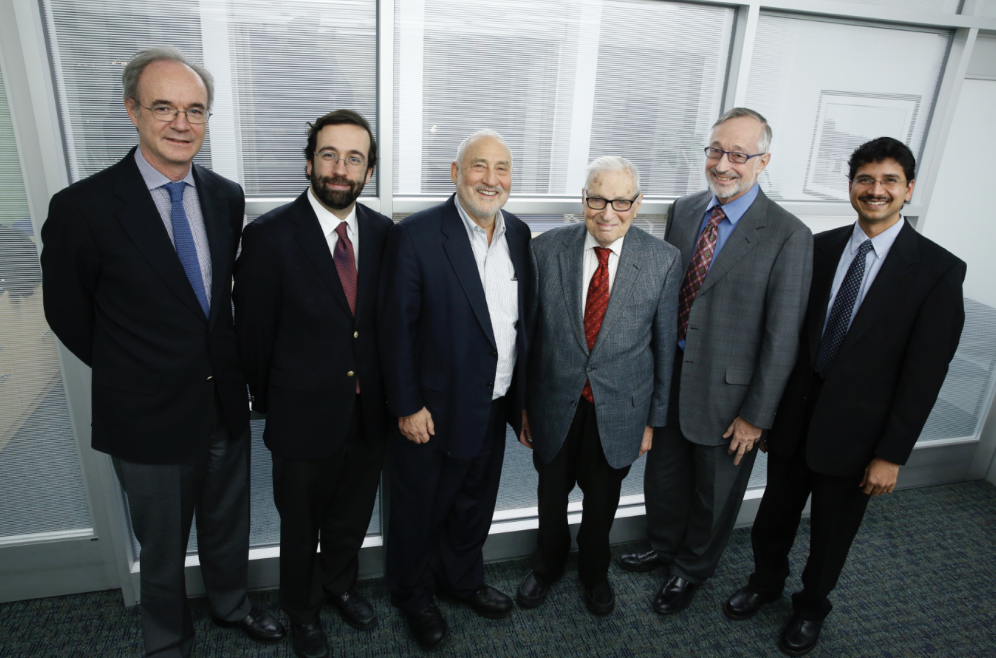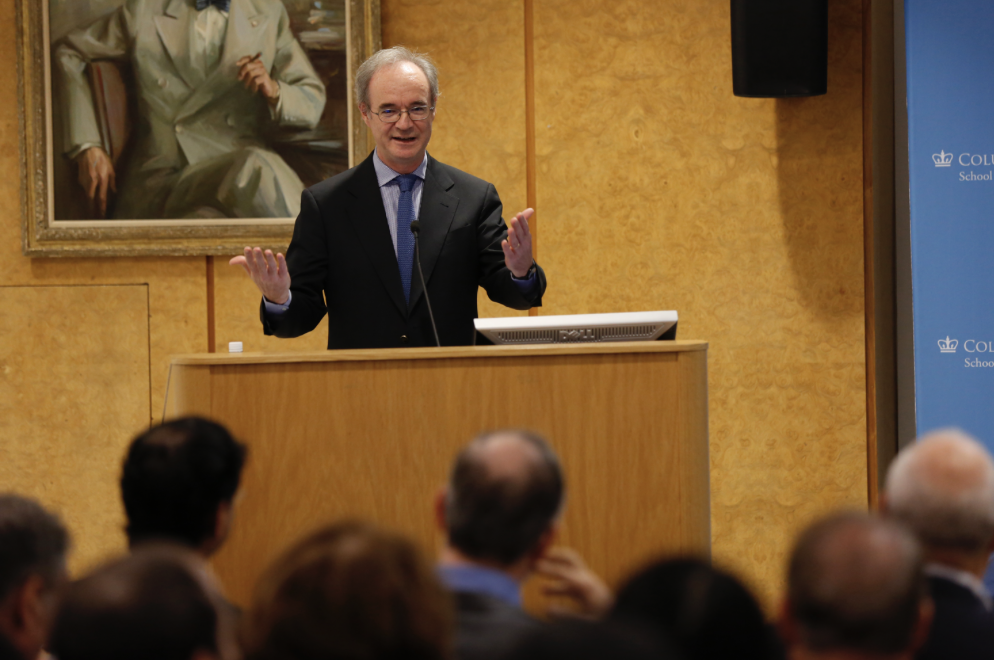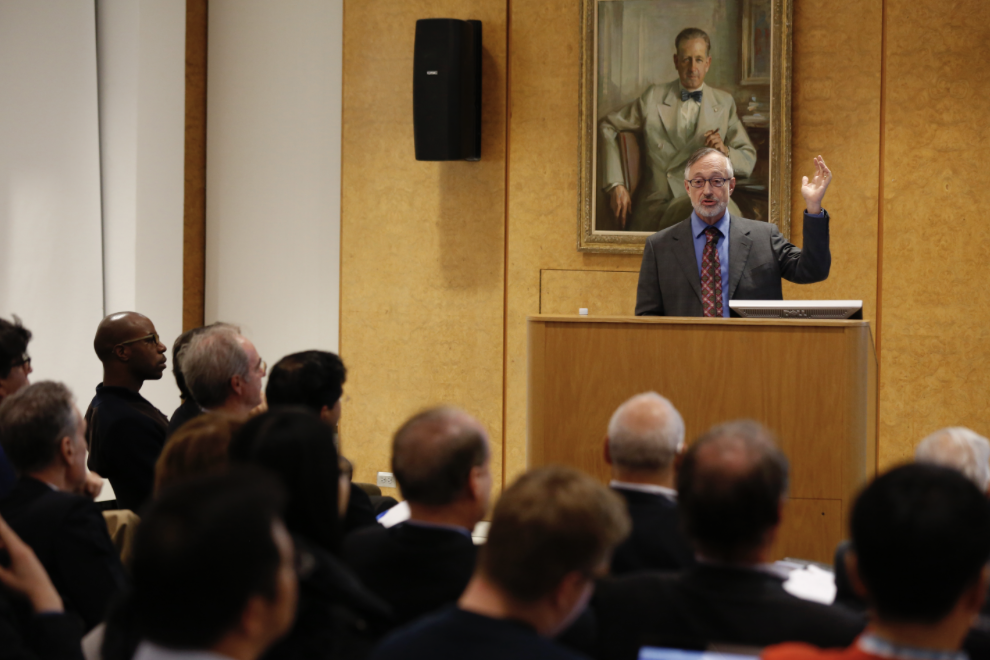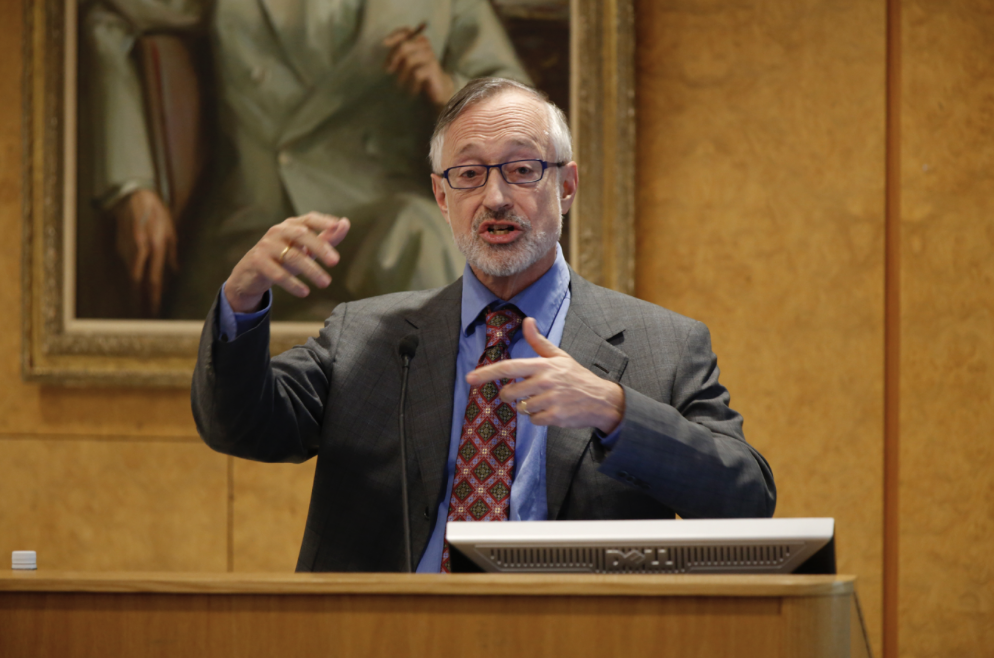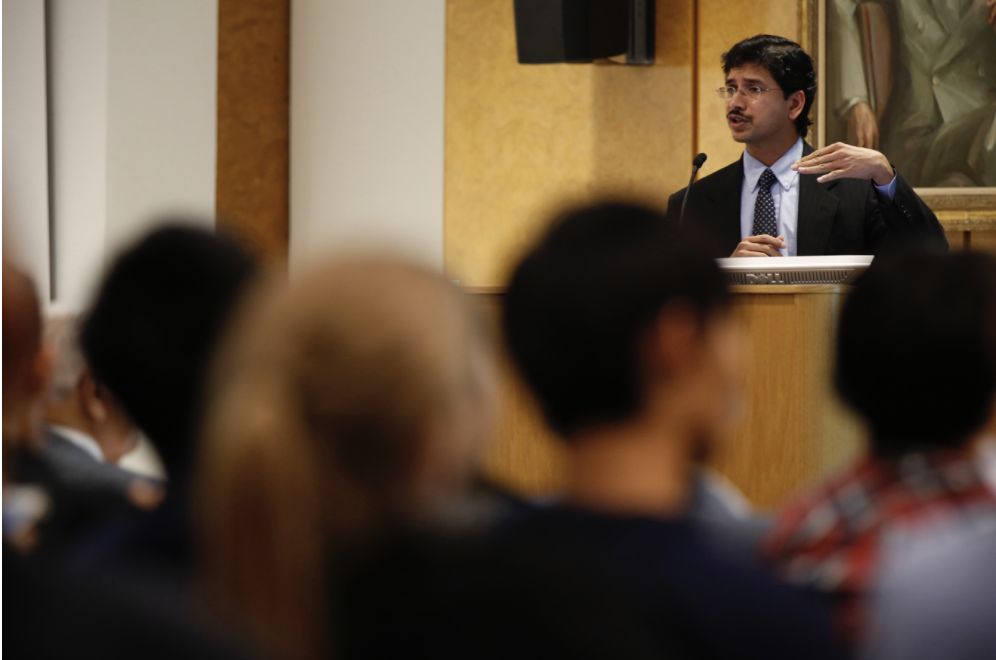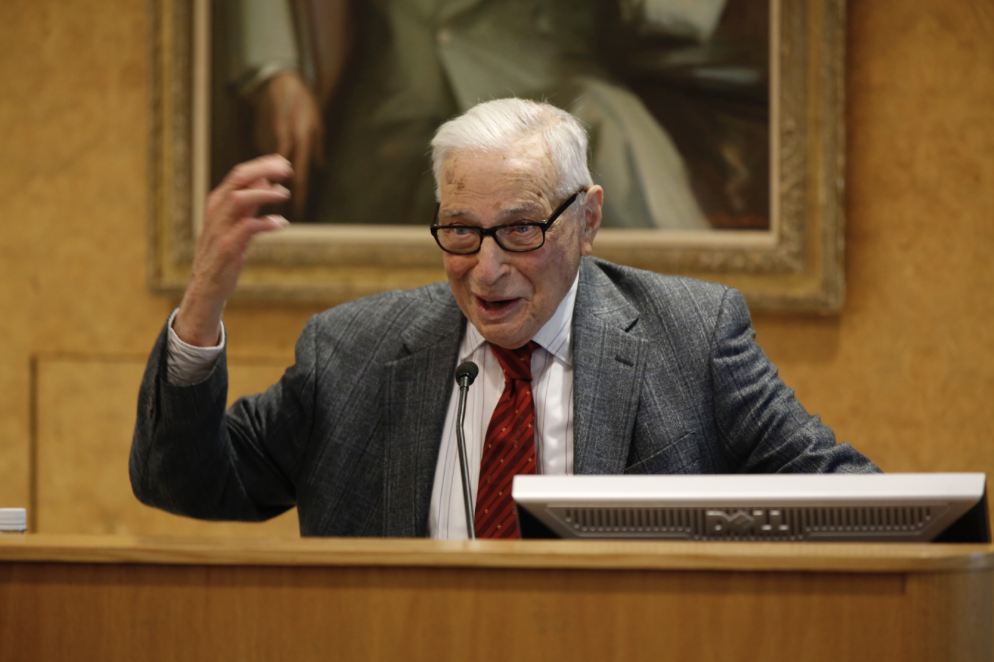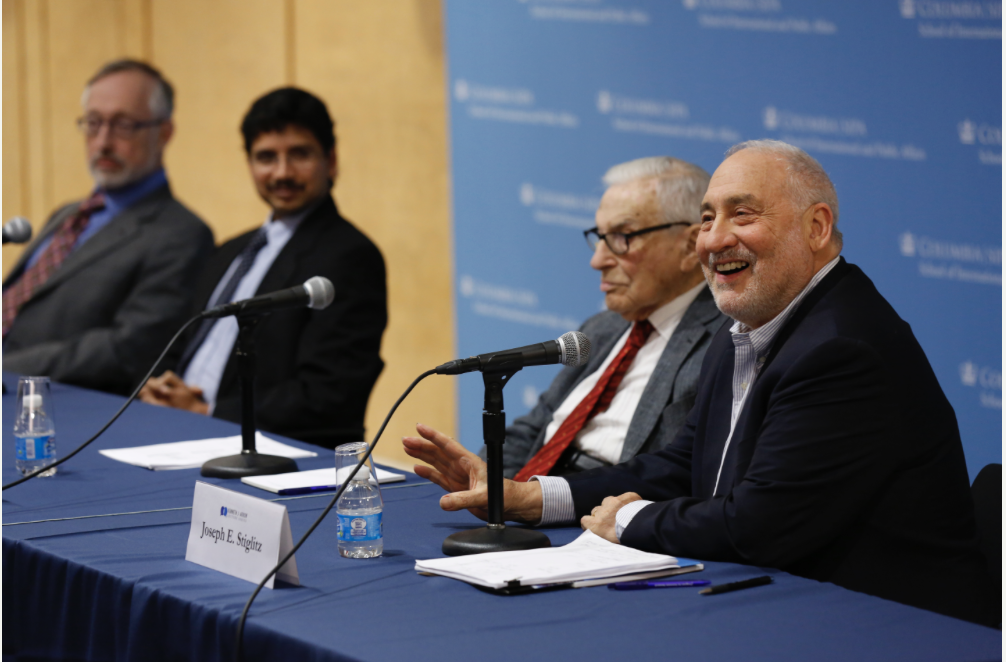On November 18, the Center on Global Economic Governance (CGEG) co-organized the 7th Kenneth J. Arrow Lecture in cooperation with the Program for Economic Research, the Committee on Global Thought, Columbia University Press, and the Initiative for Policy Dialogue.
This year’s lecture was delivered by Paul Milgrom, Shirley R. and Leonard W. Ely, Jr. Professor in Humanities and Sciences at Stanford University, who discussed how prices can guide decentralized resource allocations in environments with non-convexities. New research approaches in this field involve collaboration between economists and computer scientists to compute approximate optimization, which is intractably hard in non-convex environments, and to create price signals to guide investments in resources for the future.
Paul Milgrom discussed a number of examples of the role of prices for complex resource allocations, including the Front Range Spaceport in Colorado, land lotteries in Georgia, and the Federal Communications Commission’s (FCC) “incentive auctions” of broadcast television spectrum. In Georgia, there was very little change in land allocations despite technical progress leading to larger optimal plots over time. Possible solutions to this, and similar problems elsewhere in the world, include alternative property rights, larger transactions to create more substitution possibilities, and centralized auction procedures. Discussing the role of prices across different non-convex environments, Milgrom noted that all of these solutions are happening now in the radio spectrum. Computationally, the optimal allocation of TV broadcast licenses is extremely difficult to find, but can be approximated quite well by using deferred acceptance methods.
Jay Sethuraman, Professor of Industrial Engineering and Operations Research at Columbia University, also gave a presentation in which he noted that optimal mechanisms for auction design should ideally be simple, robust and flexible, computationally efficient and near-optimal. He highlighted the fact that deferred acceptance auctions work relatively well in practice but can have very bad worst-case performance. A key issue in future auction design would therefore be to understand scoring functions and problem structures.
A discussion followed between Milgrom, Sethuraman, Joseph Stiglitz (University Professor, Columbia University) and Kenneth J. Arrow (Joan Kenney Professor of Economics and Professor of Operations Research, Emeritus, Stanford University) on the economic assumptions behind auction design in non-convex environments and its practical applications. Joseph Stiglitz talked about the applications in land allocation, in agriculture as well as other contexts such as urban construction. He also noted contexts where price mechanisms don’t work, including when dimensions are too large and under certain time constraints. The participants also discussed how diversity of ownership raises the possibility of discriminatory allocation and how this relates to property rights.
Property rights is a big issue in these types of auction designs and was discussed by all of the participants in the Q&A; from the case of TV broadcasters in the United States to land allocation in India. A general conclusion was that future auction designs should take more into account how property rights are designed and divided.
By Erik Lindblad, Master of International Affairs Candidate ‘15

